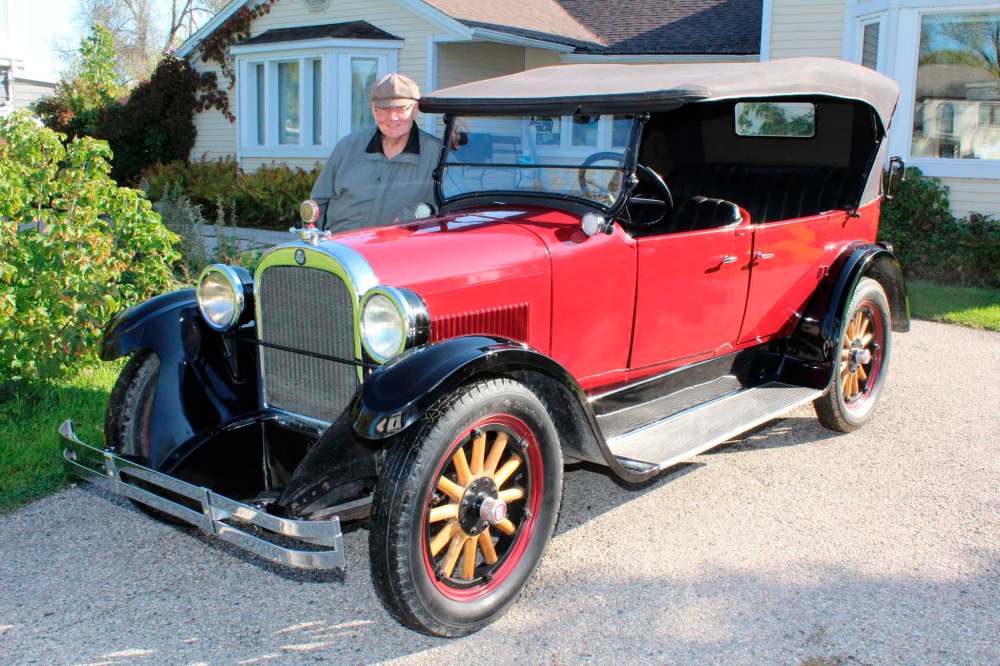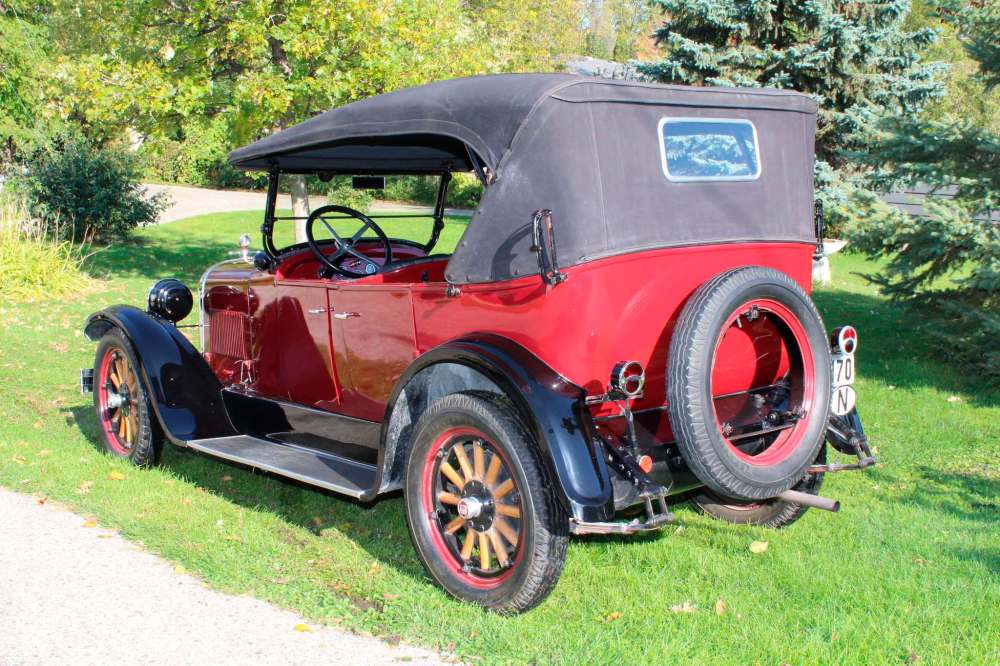Rolling back to the Roaring Twenties
1926 Dodge Brothers Touring Car built to last
Advertisement
Read this article for free:
or
Already have an account? Log in here »
To continue reading, please subscribe:
Monthly Digital Subscription
$0 for the first 4 weeks*
- Enjoy unlimited reading on winnipegfreepress.com
- Read the E-Edition, our digital replica newspaper
- Access News Break, our award-winning app
- Play interactive puzzles
*No charge for 4 weeks then price increases to the regular rate of $19.00 plus GST every four weeks. Offer available to new and qualified returning subscribers only. Cancel any time.
Monthly Digital Subscription
$4.75/week*
- Enjoy unlimited reading on winnipegfreepress.com
- Read the E-Edition, our digital replica newspaper
- Access News Break, our award-winning app
- Play interactive puzzles
*Billed as $19 plus GST every four weeks. Cancel any time.
To continue reading, please subscribe:
Add Free Press access to your Brandon Sun subscription for only an additional
$1 for the first 4 weeks*
*Your next subscription payment will increase by $1.00 and you will be charged $16.99 plus GST for four weeks. After four weeks, your payment will increase to $23.99 plus GST every four weeks.
Read unlimited articles for free today:
or
Already have an account? Log in here »
Hey there, time traveller!
This article was published 14/02/2020 (2107 days ago), so information in it may no longer be current.
At the turn of the 20th century John and Horace Dodge were working out of a small machine shop in Detroit, Michigan. Mechanically inclined and with several inventive endeavours behind them, the Dodge brothers caught the eye of Henry Ford and were commisioned to build engines, transmissions and axles for the Ford Model T up to 1913.
As 10 per cent stockholders in the Ford Motor Company they grew aware that Ford wanted to seek out another powertrain supplier and force the brothers to compete for work. Tired of being in Ford’s vest pocket as minority stockholders, they struck out on their own in 1914, building their own line of automobiles under the Dodge Brothers brand. Well received by the motoring public, the robust and reliable automobiles went on to make Dodge Brothers the number two vehicle supplier within a few short years.
Both the Dodge brothers died in 1920, and the company was sold by their families to Dillon, Read & Co. in 1925 before being sold to Chrysler in 1928.

By 1926, production numbered more than 250,000 vehicles a year out of the Detroit factory. One of those 1926 Dodge four-door Touring cars was exported to Oslo, Norway. Riding on a 116-inch wheelbase with 21-inch wheels, it was a large comfortable car for the times, serving its owners well. One amazing detail is the Dodge survived through the Nazi hunt for scrap metal during the Second World War occupation of Norway. Winnipegger Ernie Howse was working in Norway and bought the Dodge in the fall of 1981. Over the winter he restored it, being careful to retain as much of the original car as possible, including its wooden spoke wheels. A seized engine took several months to free up before it was rebuilt. Some parts were almost impossible to find, but Howse pressed on and found parts in Sweden and the United States — managing to get the car back into running condition by the spring of 1982.
Norway has always exhibited an intense interest in classic and collectable automobiles and the hobby continues to flourish there today.
Finished in a deep burgundy cherry with black fenders, it looks like many other cars that would have rolled out of the Roaring Twenties. Power for the Dodge comes from an L-head four-cylinder engine producing 35 horsepower and backed by a three-speed manual transmission. With plenty of torque and good acceleration a cruising speed of 60 to 65 km/h was in the comfort zone for the big Dodge. While most vehicles from the first half of the century used a six-volt electrical system, the Dodge featured a livelier and more reliable 12-volt positive ground electrical system. Under the hood is a Dodge exclusive combination starter/generator unit.
A black fabric top keeps the elements off the black leather seats, and the dash contains its original gauge cluster, including the metric speedometer found in export vehicles. The passenger compartment is rather spartan, but it did boast comfort for five passengers.
Optional equipment in 1926 was a bit different and somewhat strange by today’s standards and included a front bumper, nickel plated radiator shell and headlamp rings, cowl lamps, dual taillamps and a spare tire. It tips the scales at 2,565 pounds. With a base price of US$875, it was a costly purchase in 1926, an equivalent of US$12,638 today.

Howse returned to Winnipeg from Norway with the Dodge in April of 1983 and drove it occasionally. In July of 2019 Howse sold the Dodge to his friend Paul Horch. “I’ve admired the car since 1983 and fell in love with it and my plan is simply to maintain it and make a few minor upgrades like new tires, and then just drive it sparingly,” says Horch. “I’m just proud to own it.”
57ford@mymts.net


